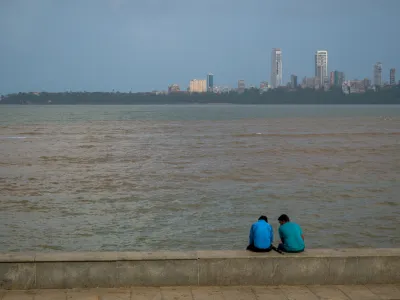A critique of a proposed "smart cities" development in Mumbai reveals how much work remains in providing the resources and maintaining the rigor to built sustainable, resilient, liveable cities.

Hugh Byrd revisits an ambitious proposal by the Indian Government to build 100 "smart cities," with a case study provided by a development in Mumbai known as Bhendi Bazaar. The 40- to 60-story towers that will replace three- to five-story townhomes have been described as "vertical with a vengeance" in its approach to density.
Byrd, however, has analyzed the project's plans using an Urban metabolism model, "which measures the impacts of the built environment, we have assessed its overall impact."
The result of that analysis was not favorable: "Our research shows that the proposal is neither smart nor sustainable." In more detail, Byrd reveals how the project falls short of the Indian government's own definitions of "smart"—as measured by 11 objectives.
The kicker of the post is not about the failure of engineering or development relative to the ambitions promoted to the public, but rather that the planning goal of making cities smart and liveable lacks the resources to become a reality.
FULL STORY: Smart or dumb? The real impact of India’s proposal to build 100 smart cities

National Parks Layoffs Will Cause Communities to Lose Billions
Thousands of essential park workers were laid off this week, just before the busy spring break season.

Retro-silient?: America’s First “Eco-burb,” The Woodlands Turns 50
A master-planned community north of Houston offers lessons on green infrastructure and resilient design, but falls short of its founder’s lofty affordability and walkability goals.

Delivering for America Plan Will Downgrade Mail Service in at Least 49.5 Percent of Zip Codes
Republican and Democrat lawmakers criticize the plan for its disproportionate negative impact on rural communities.

Test News Post 1
This is a summary

Test News Headline 46
Test for the image on the front page.

Balancing Bombs and Butterflies: How the National Guard Protects a Rare Species
The National Guard at Fort Indiantown Gap uses GIS technology and land management strategies to balance military training with conservation efforts, ensuring the survival of the rare eastern regal fritillary butterfly.
Urban Design for Planners 1: Software Tools
This six-course series explores essential urban design concepts using open source software and equips planners with the tools they need to participate fully in the urban design process.
Planning for Universal Design
Learn the tools for implementing Universal Design in planning regulations.
EMC Planning Group, Inc.
Planetizen
Planetizen
Mpact (formerly Rail~Volution)
Great Falls Development Authority, Inc.
HUDs Office of Policy Development and Research
NYU Wagner Graduate School of Public Service




























